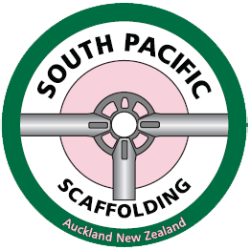With this in mind, it is important to understand the potential hazards associated with scaffolding erection, maintenance, and dismantling. Furthermore, knowing where your responsibilities lie in terms of ensuring you are providing a safe workplace for all personnel on-site to keep them out of harm’s way is a necessity.
What are the hazards associated with scaffolding?
There are many hazards to be aware of when it comes to scaffolding in Auckland. The height factor obviously plays a big role in the increased risk, but there are also hazards posed by the materials used, the way the scaffolding is set up, and how it is being used.
Scaffolding is an important part of many construction projects. It provides a stable and level platform for workers to stand on while they are working on high areas of a building. Scaffolding can be made from a variety of materials, including wood, metal, and plastic. While scaffolding can be a very useful tool, it also has the potential to be dangerous. There are several hazards that workers should be aware of when working with scaffolding, including the following:
Falls from scaffolding
Falls from scaffolding is one of the most common hazards associated with this type of work. Workers can fall if they slip or trip while on the scaffolding, if the scaffolding collapses, or if they fall off of the edge of the platform. It is important to always use caution when working on scaffolding, and to wear proper safety gear, such as a harness, to help prevent falls.
Objects falling from scaffolding
Another hazard that workers need to be aware of is the potential for objects to fall from the scaffolding. This can happen if tools or materials are not properly secured, or if workers lose their grip on them while working on the platform.
Electrocution
Electrocution is another hazard that workers need to be aware of when working with scaffolding. This can happen if the scaffolding comes into contact with power lines, or if workers are using electrical equipment on the platform.
Collapsing scaffolding
Another hazard associated with scaffolding is the potential for the platform to collapse. This can happen if the scaffolding is not properly secured, or if it is overloaded with materials or workers.
What precautions can be taken to avoid scaffolding hazards?
There are several precautions that workers can take to help avoid scaffolding hazards. These include the following:
Use caution when working on scaffolding
The best way to avoid scaffolding hazards is to use caution when working on the platform. This means being aware of your surroundings and keeping an eye out for potential hazards. It also means wearing proper safety gear, such as a harness, to help prevent falls.
Secure loose objects before beginning work
Another precaution that workers can take is to secure any loose objects before beginning work on the scaffolding. This will help prevent them from falling off of the platform and injuring someone below.
Keep the scaffolding away from power lines
To help prevent electrocution, it is important to keep the scaffolding away from power lines. If possible, use non-conductive materials, such as wood or plastic, to help reduce the risk.
Follow the manufacturer’s instructions
It is also important to always follow the manufacturer’s instructions for assembling and using the scaffolding. This will help ensure that the platform is properly secured and will not collapse.
Make sure all workers on the scaffolding are adequately certified
Another precaution that should be taken is to make sure all workers on the scaffolding are adequately certified. This will help ensure that they are familiar with the hazards and are aware of the proper safety precautions to take, their responsibilities in mitigating risk, and have experience working at heights.
To help prevent these accidents, workers should always follow safety procedures when working with scaffolding. These procedures include inspecting the scaffolding before use, using fall protection devices, and avoiding work near power lines. By following these safety measures, scaffolding can be a safe and effective tool for workers.
When Should you carry out Scaffolding Inspections?
It is the responsibility of the scaffolder to ensure that the scaffolding is erected correctly and is safe to use. Once the scaffolding has been erected, it is the responsibility of the person in charge of the site to carry out regular inspections.
The frequency of these inspections will depend on the type of scaffolding and how it is being used. For example, if the scaffolding is being used for general purposes, then it should be inspected at least once a week. However, if the scaffolding is being used for more hazardous activities, such as working with electrical equipment, then it should be inspected more frequently.
In order to keep your worksite compliant with New Zealand Health and Safety laws, there are specific, mandatories inspections that have to take place. These inspections differ depending on the scaffolding setup, so you must be well versed in when and where these inspections need to take place.
For further information on this, make sure you read our guide to scaffolding inspections and scaffolding maintenance.
South Pacific Scaffolding are Auckland’s Scaffolding Experts
At South Pacific Scaffolding, we’ve made huge investments into ensuring that our entire team is certified in identifying and addressing any hazards when it comes to erecting, servicing, maintaining, and dismantling scaffolding. We pride ourselves in our scaffolding services that provide a safe work site to ensure your project moves along without any delays. This has resulted in us having a stellar safety record, putting us forward as industry-leading scaffolding suppliers in Auckland. For more information about our range of scaffolding services, get in contact with the team at South Pacific Scaffolding today!

